CHARRO DAYS: HIGH SPIRITS ON THE BORDER.
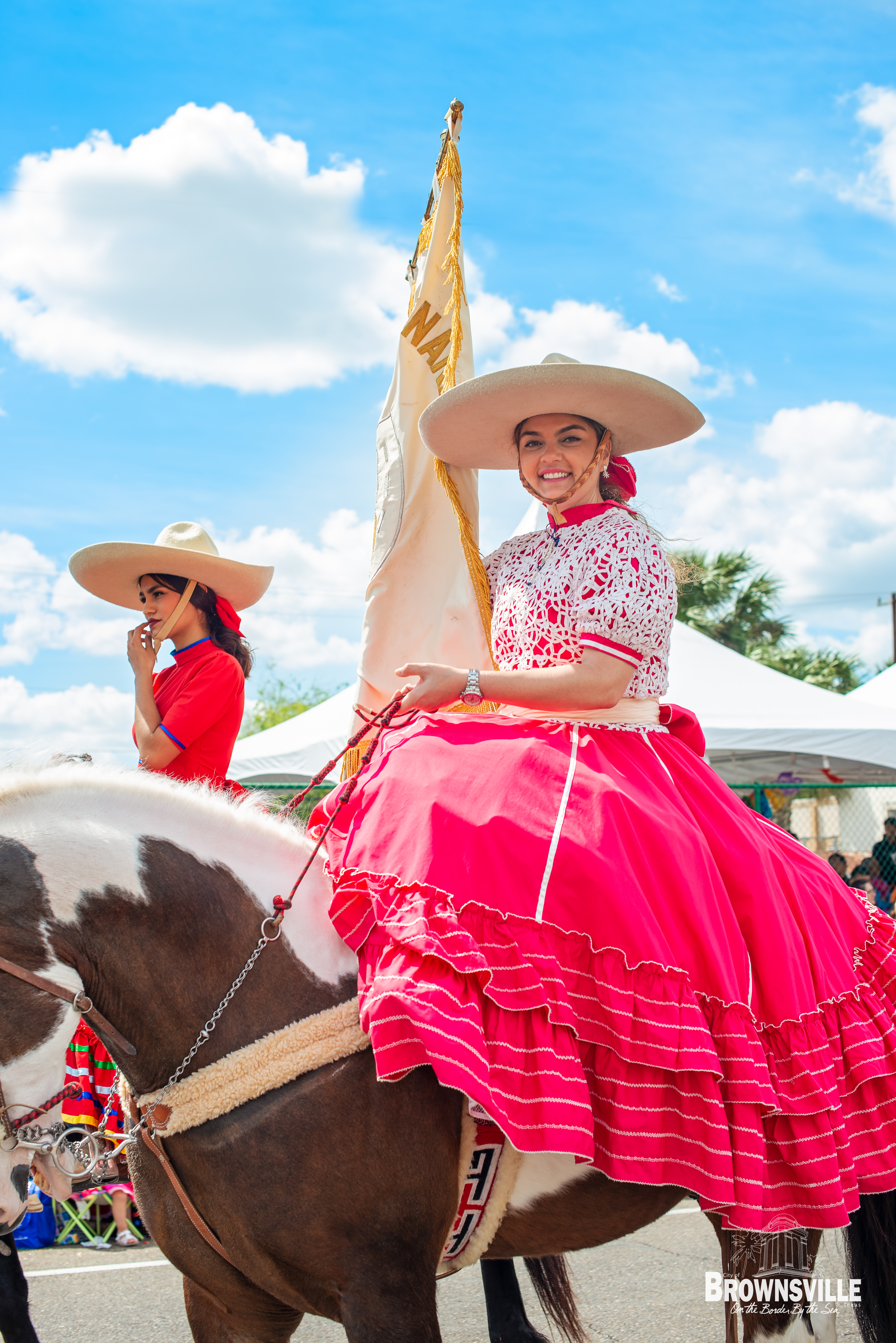
By Lilia Davis
The name itself, Charro Days brings to mind immediately high spirits simply by saying it. However, when I started this article, I thought I was going to find just another merry Festival on the Border and as such would be easy for me to write about. I never anticipated the profound impact this Festival has on the people of Brownsville and Matamoros just across the border, their pride in their cultural traditions and overall feeling of optimism, the joy of being alive along the lower Mexican Border, which for me was a welcome surprise in these uneasy times.
Nor had I expected to find myself so profoundly revisiting my own girlhood in Northern Mexico, my roots to use a worn out noun, a culture that was my own for certain but that I had mostly taken for granted while living here in the United States and times in Europe.
Least of all did I see myself arriving in this vibrant but often overlooked part of the country driving, of all things, a brand new double cabin pickup furnished me by General Motors.
A preliminary word about that. I had received a message from General Motors a week earlier offering me the use of a new Chevrolet Silverado, a luxury pickup for attending the Festival in Brownsville. Having driven German luxury cars for the last ten years I had no idea of what to expect when the driver delivered it to me at my studio. Three weeks later when I returned the Silverado to General Motors I found myself reluctant to let it go, I was so taken with the truck. I have forgotten that pick up trucks had been a significant part of my childhood.
======================================================
The Saddlery
As I have said I grew up in Reynosa Tamaulipas right on the border, spending my childhood in a family owned hardware store and lumber yard in Reynosa, Tamaulipas, with five brothers and with this family business, pickups were part of my daily life.
When my dad would go out at dawn on a shopping trip to Monterrey, Nuevo Leon, he would come back at dusk with his truck full of merchandise for the store.
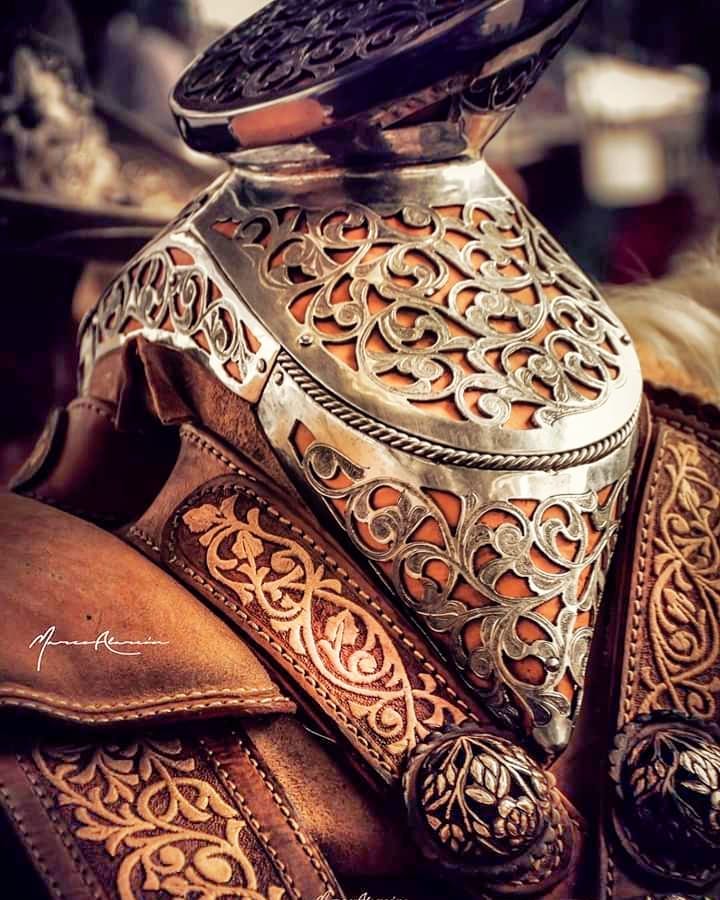
The merchandise that I enjoyed the most was the one placed at a special corner room in the back of the hardware store, a room dedicated for the saddlery, with leather saddles, spurs, horseshoes, horse blankets, ropes, bridles and other accessories necessary for the nearby ranches.
This corner room was also highly favored by customers and ranchers from both sides of the border for the practice of the charrería, a sport which was my father’s passion, my father being an expert himself in the matter of horsemanship and one fo the founders of the Charro Association of Reynosa in the 1940’s.
Embracing my Norteño Roots
My mother’s family is from Heroica Matamoros, Tamaulipas and she was born and raised in that region. Why Heroic? It was officially designated as Heroic as in 1866 it defied a siege by French army and the Mexican Conservatives in the Battle of Bagdad. So she always made sure I remember that “H”.
Also, my maternal grandfather created an important cotton business during the golden age of cotton in the 40s-60’s from his farm and ranch in the region around Sandoval west of Matamoros. The quality of cotton produced there was recognized worldwide.
Those memories inspired me to visit Brownsville, Texas and celebrate Charro Days for the first time ever. And what better way to start my trip South Texas than driving a brand new Chevrolet 2020 Silverado Crew RST 4WD pickup.
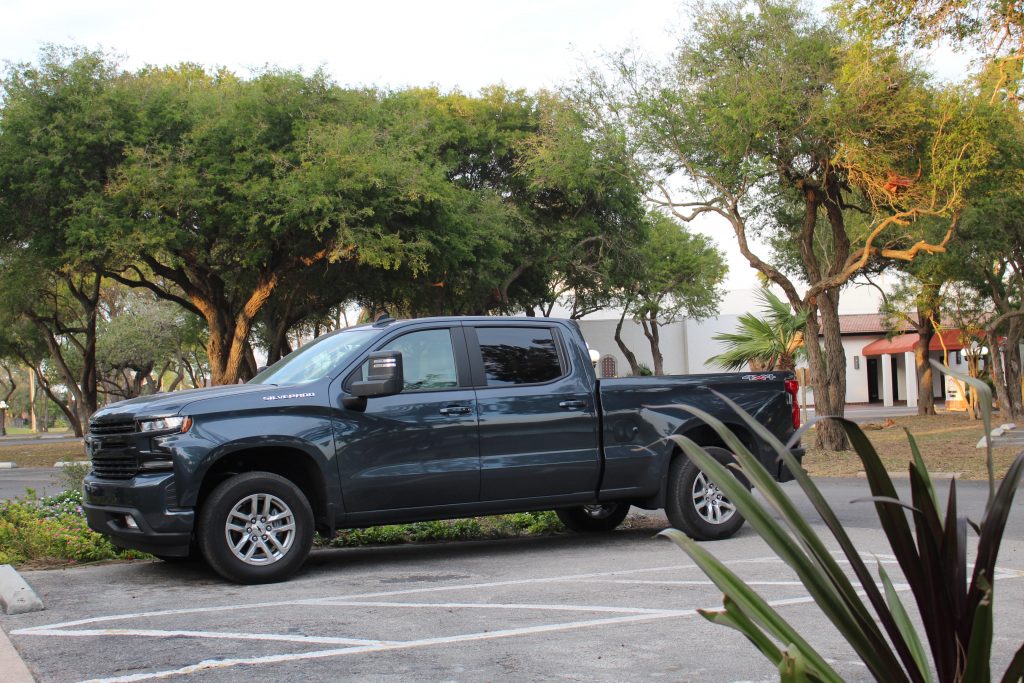
ON THE ROAD WITH THE SILVERADO
“We will be leaving at five..a.m.!”
The next day, after packing all my travel bags in the spacious back seat of the pick up I found myself “leaving at five», as my father used to say. It was a cold February day in Austin, so cold, but the heater in the seats of the Silverado, and to my surprise, the heater in the steering wheel of the truck were welcomed.
I drove through San Antonio, where I stopped to enjoy, like a good norteña, a hearty breakfast of “Machacado” at the Blanco Café downtown, (and please, if you’re ever in San Antonio, try their delicious homemade flour and corn tortillas)
The further south I drove on U.S. 281 the feeling of the rightness of arriving in South Texas in a double cab truck grew stronger. As I could see through the immense side mirrors, many other pickups on the highway, and some of the drivers in western hats admiring my truck as I was passing them on the road. It may be my imagination but I thought I could detect a speck of envy in their eyes.
Finally I arrived in Brownsville, Texas, and checked in at the magnificent Spanish Colonial Style Rancho Viejo Resort & Country Club (more on this on a separate article), an appropriate place to stay during the 83rd Annual Charro Days Festival 2020, one of the largest celebrations running almost three weeks! (February 22nd – March 8th)
CHARROS DAYS, WHAT IS IT ANYWAY?
It all started in a Barber Shop
I was surprised to find out that there are still many people outside of Brownsville who know very little about this tradition on the border, so I will share a brief history. The original idea was formed in a barbershop, probably the Queen Barber shop, in downtown Brownsville in an informal conversation with Mr. Kenneth Faxon, a businessman known later on as the “father” of Charro Days.
“The idea behind this was a celebration in the city during almost three weeks of February, aiming to be an antidote to lift the spirits during difficult times of the Great Depression in the 1930’s. And so the idea was born.”
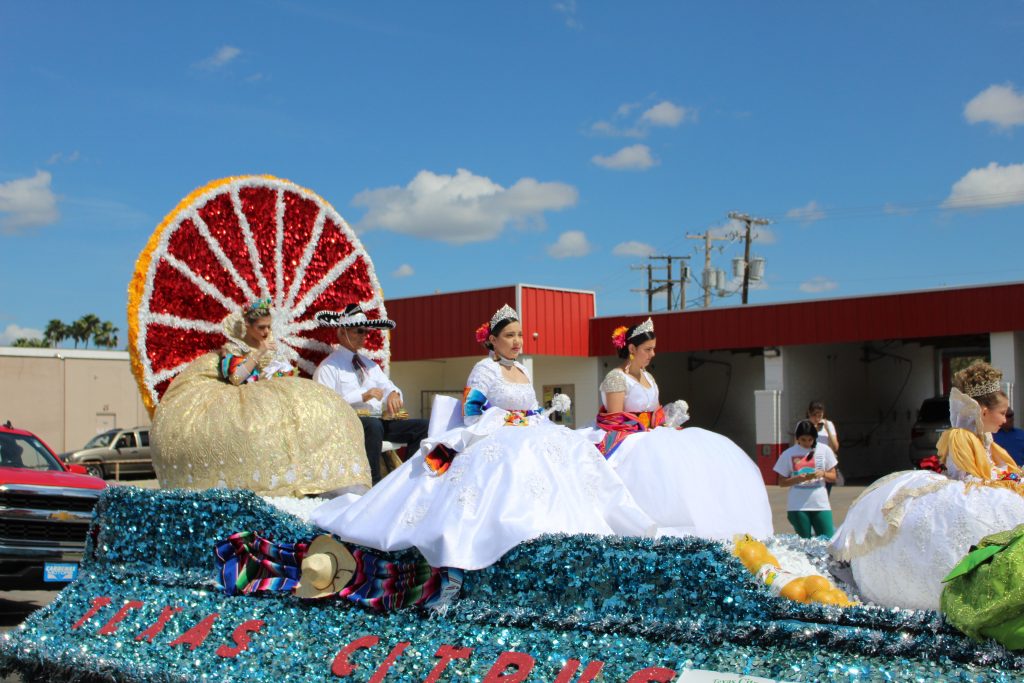
Influenced by the Citrus Fiesta in Mission, Texas 1937, the New Orleans Mardi Gras and the opening of the Port of Brownsville, Kenneth Faxon, selected members of The Pan American Round Table to coordinate a celebration event to be called Charro Days in honor of Charros, or “dashing Mexican gentlemen cowboys”.
The first Charro Days was held in 1938, Brownsville being joined by its Mexican neighbor city of Matamoros, and the governors of Texas and states of México came to celebrate their shared cultural heritage bringing traditional dances, parades, fireworks, boat races and charreadas. According to the Brownsville Historical Association, it was an instant success with national recognition in all types of media, including NBC’s popular TODAY SHOW which televised a feature on the festival at one time.
Celebrities at Charro Days
As the years passed by, Charro Days became better and better with international music figures such as Xavier Cugat, Desi Arnaz and wife actress Lucille Ball, Tito Guizar, as well as the famous Floating Gardens of Xochimilco were staged in 1949. Also names such as Gen. Jonathan Wainwright, Cantinflas and Metropolitan Opera stars were part of it. Latin American newspapers were providing two-page centerfolds of coverage.
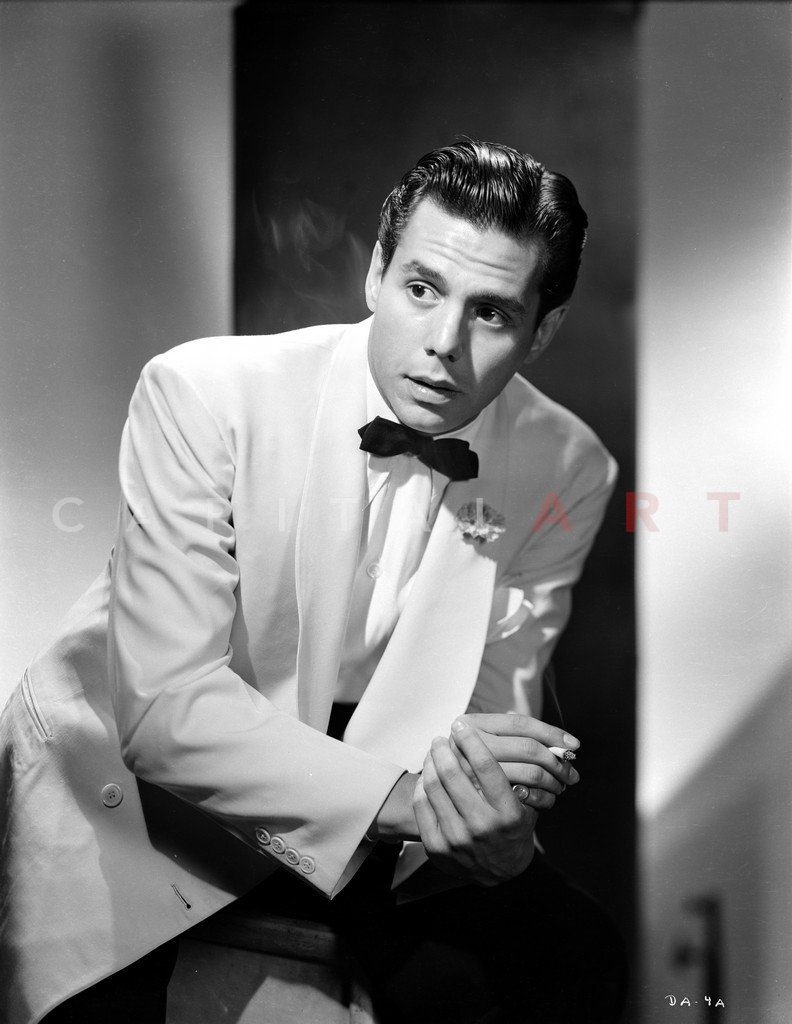
The «grito,» the joyful Mexican shout, opens the festivities every year, and this celebration has become an event of national significance, attended by journalists from all over the country, including the New York Times. Several presidents have visited Charro Days, including President Barack Obama in 2008.
Nowadays close to fifty thousand people show up, most of them wearing Charro suits, and traditional mexican dresses to be part of the Festival and celebrate their pride in this event.
ADDED CELEBRATIONS
SOMBRERO FESTIVAL
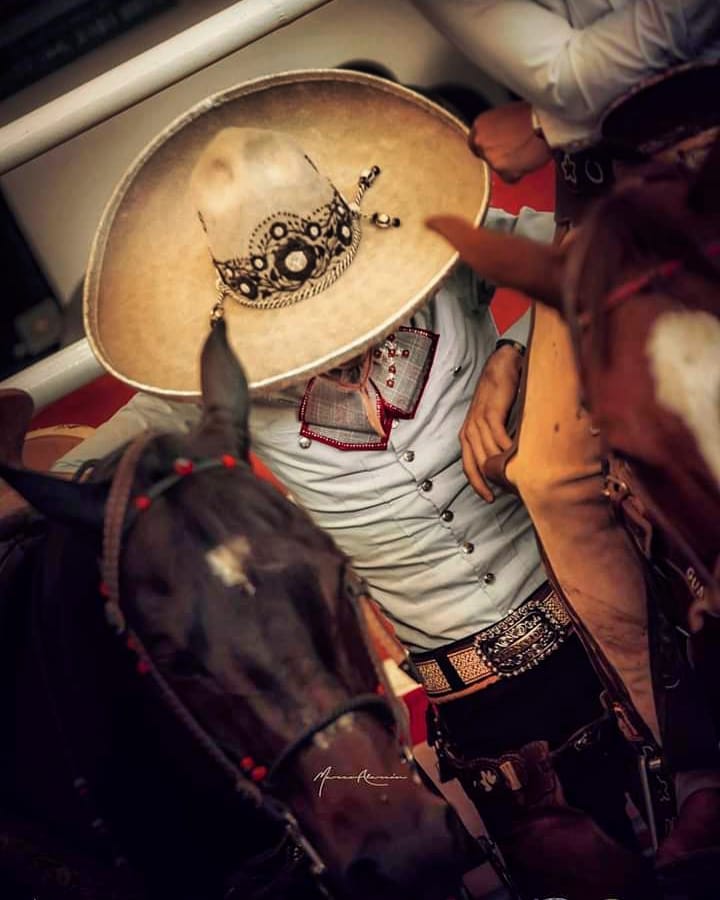
The Festival has grown tremendously since then including public and private dances and has been extended to an almost three weeks long celebration as other activities within this Festival were born such as the SOMBRERO FESTIVAL in 1986 with music and dances to enhance the spirit of the general celebration, usually held at Washington Park. Sombrero Photo: Marco Alarcon.
There is also a Children’s Parade where school children perform Mexican folkloric dances and there is an Illuminated Evening Parade. And the famous Grand International Parade.
MR. AMIGO
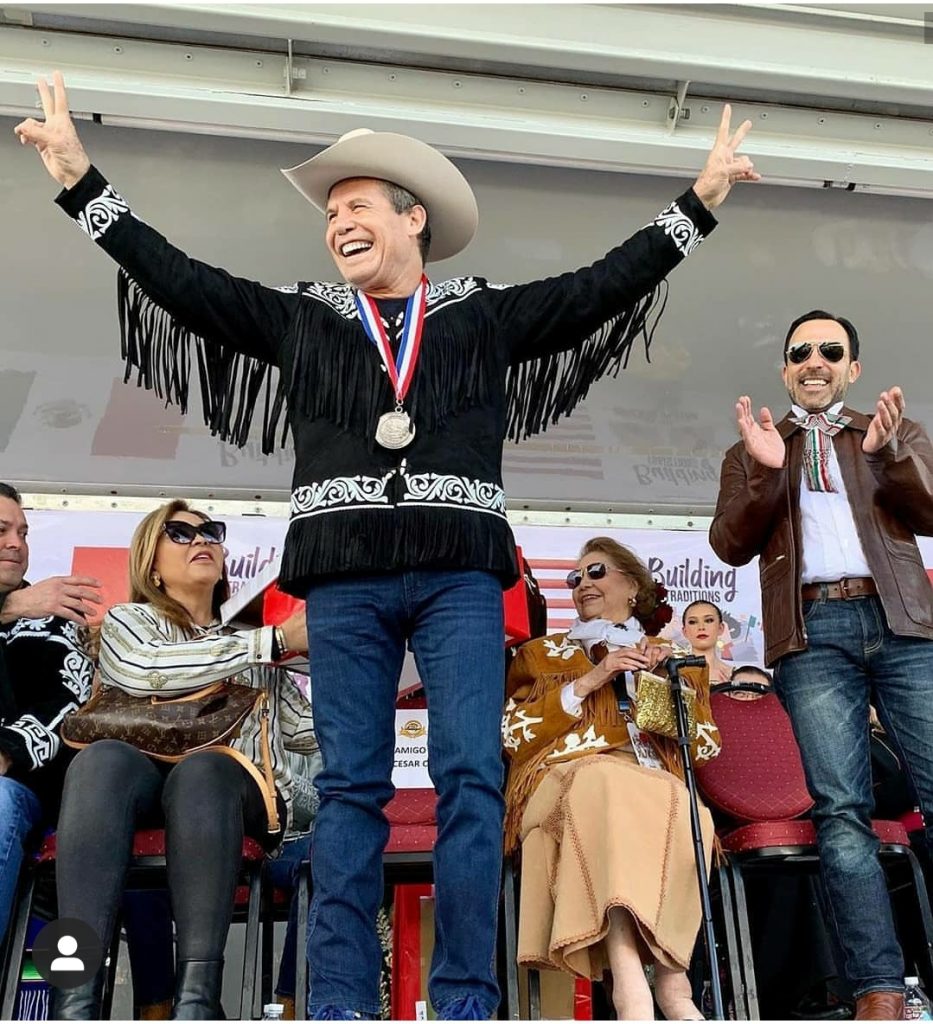
MR. AMIGO was added in 1964, focusing on recognizing a Mexican citizen who had contributed to the friendship of the United States and México. This year MR. AMIGO was Julio César Chávez, a former professional boxer from the city of Obregón, Sonora, México.
A six-time world champion during his 25-year career and was inducted into the Boxing Hall of Fame in 2011. And in tune with the tradition, he was proudly wearing a traditional «cuera» jacket from the State of Tamaulipas hand made in México by Haeberli from Victoria Tamaulipas.
CROSSROADS FESTIVAL
This year the CROSSROADS FESTIVAL joined the Charro Days Festival with great success for the first time. A three-day event with Film + Music + Politics + Art. Showcasing films and workshops from the United States and Mexico, with special host actor RJ MITTE from «Breaking Bad» tv series.
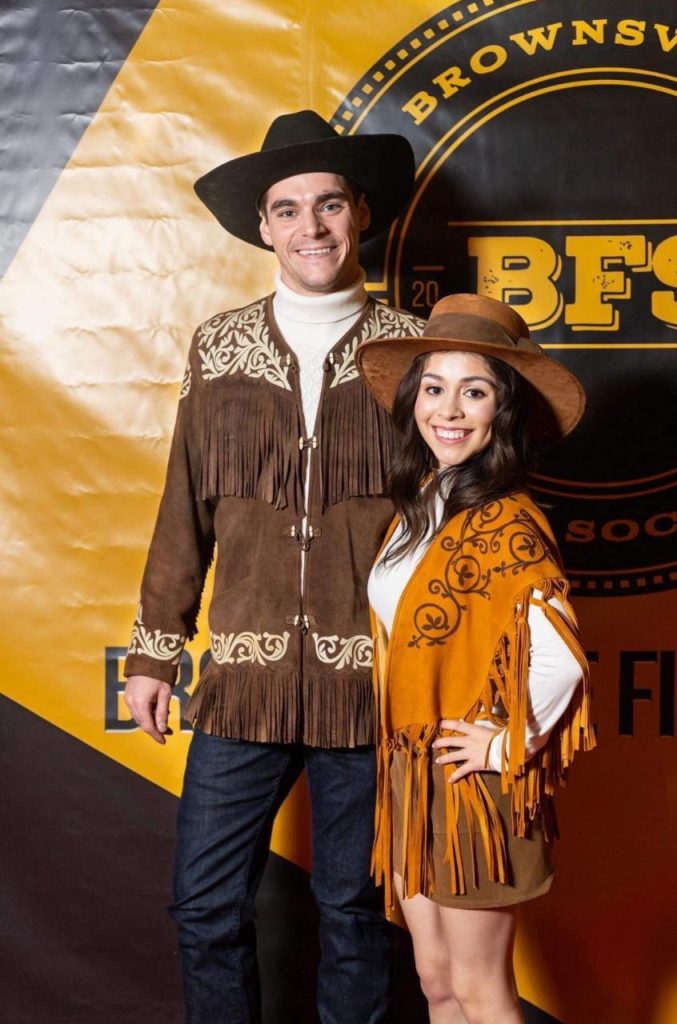
RJ MITTE 
THE WARNING
It also included a fashion show with traditional costumes from the Americas. But the music was special with the electrifying rock band formed by three sisters from Monterrey, Mexico, «THE WARNING» (more about this in a separate article- You’ve been warned!).
THE WOMEN BEHIND CHARRO DAYS

The Pan American Round Table
After the Charro Days idea was born, its execution was made possible thanks to a major participation of women. A group of public-spirited women interested in Latin American culture organized as the Pan American Round Table of Brownsville, Texas, an organization to help promote friendship and understanding among women in the Western Hemisphere.
This genuine desire to offer help formed the first bond of friendship between the women of Mexico and the United States, a feeling that still prevails to this day.
As Connie Garcia-Knox, who lived and grew up in Matamoros for a long time and now lives in California, recently told me about her childhood there, «it was common to see women from both sides of the border working together for the community.
And the first thing women from Brownsville saw when they crossed the border were the luxurious houses of the Colonia Jardin in Matamoros, not bars, or shacks and poverty. Even the clothing stores displayed the most sophisticated dresses from the interior of Mexico,» she added.
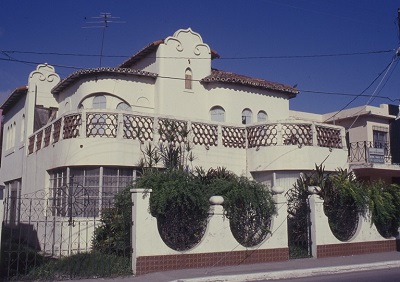
Nydia O. Tapia-Gonzalez, of RGVMOD recalls: «In 1951 Time magazine reported that «Along the flowery streets of Colonia El Jardin of Matamoros , there are so many new, luxurious houses that one astonished American muttered, ‘This is what the South must have looked like before the Civil War.» Photo: Cavazos Home.

It was within this environment of easy relations and frequent social exchanges between Brownsville and Matamoros that the origins of the Pan American Round table are found.
The concept of the Round Table, originally founded by Florence Terry Griswold, the daughter of a prominent Texas family, a cattle rancher during the Mexican Revolution, was inspired by the knights of KING ARTHUR and Alexander Dumas’ Three Musketeers.
“The essential idea is that everyone at the round table was equal, a circle without beginning or end, symbolizing unity, perpetuity, equal representation and equal opportunities by choosing Alexander Dumas’ immortal expression: «One for all and all for one».”
Every seat at the Round Table was designed to represent every country in America. Women were encouraged to learn and share their experiences. «There were twenty-one seats representing each country of the Americas,» explained Cristina Tijerina, director of the Museum of Traditional Costumes of the Americas in Brownsville, Texas, and Isabel Garcia Vezzetti about the Pan American Round Table.
So women of the caliber of Florence Terry Griswold were behind the organization of the Charro Days Festival.
IMPORTANCE OF TRADITIONAL CUSTOMS AND SPANISH LANGUAGE
The traditional customs to be worn during the Charro Days Festival were taken seriously, and a book of images and drawings of traditional customs was issued for Charro Days to make sure the regional costumes of México were featured, mostly from different states of México. The China Poblana Dress and Charro suits were the most popular. Photos: Marco Alarcón

China Poblana Dress 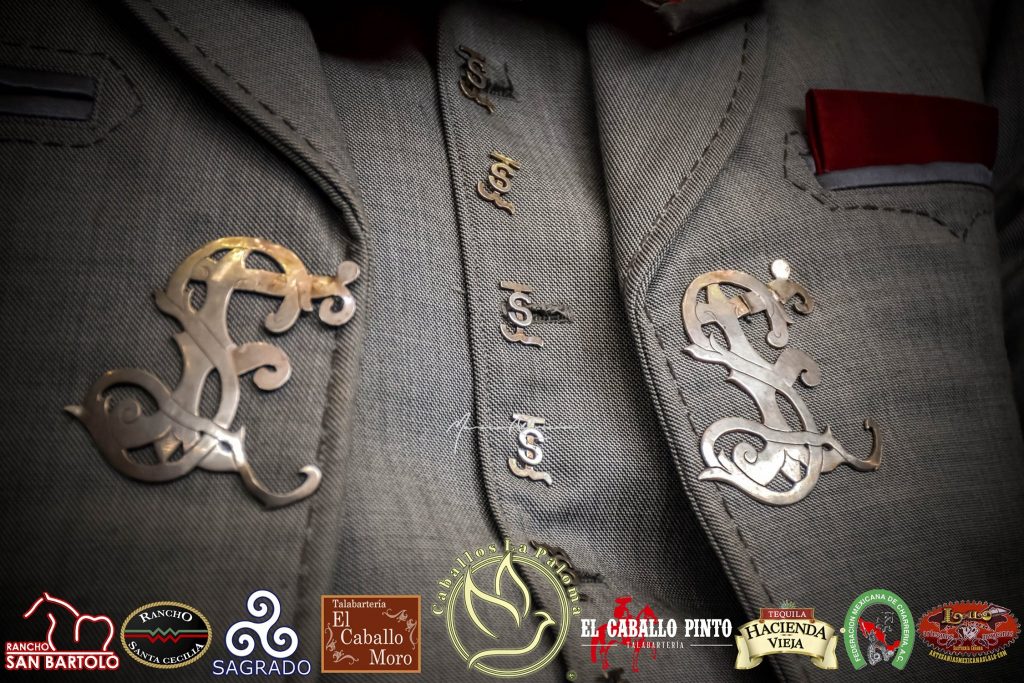
Gala Charro Suit
Also, Spanish language used in the most correct form was evident. I encountered this myself, while driving through the streets of downtown Brownsville with my vehicle. I parked on a street in front of a local store called «Siglo». (Century) The store was filled with Charro suits and Mexican traditional dresses and blouses for women.

A wall full of colorful bows called my attention, as I remembered my father wearing them during his Charro competitions and I wanted to buy one. “How much are those bows?”, I asked the woman owner.
She replied “Those? Those are not bows señorita”, she corrected me, “it is called “cor-ba-tin” or Mexican embroidered corbats for the charro suits. (tied in the back as bow ties) “if you want “bows”, take a look at this other wall”. And she pointed to a wall full of girls’ laces at the corner.
As I have said, 50 000 people show up for the Charro Days Festival, most of them wearing Charro suits, and traditional dresses to take part and proudly celebrate this three weeks long event.
MEXICAN ESCARAMUZAS
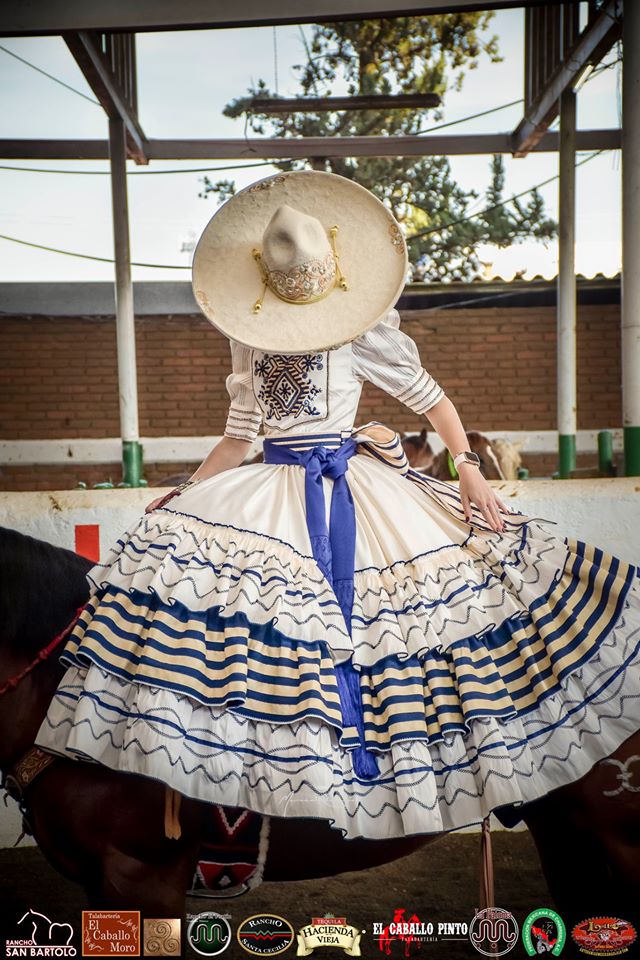
The Escaramuzas deserve a special mention during Charro Days. Growing up around weekend charreadas in Reynosa I could appreciate not only their equestrian skills but their impressive dresses and their sophisticated hair arrangements with beautiful laces under their lustrous charro hats.Their attire envelops them with great dignity.
I would say that elegance is a synonym for the Escaramuzas. It is not a coincidence that Italian designer Maria Grazia Chiuri, the first woman designer in charge of the house of Christian Dior in Paris was inspired by the Mexican Escaramuzas in her Spring Summer 2019 collection, see article A Matter of Tule here. .
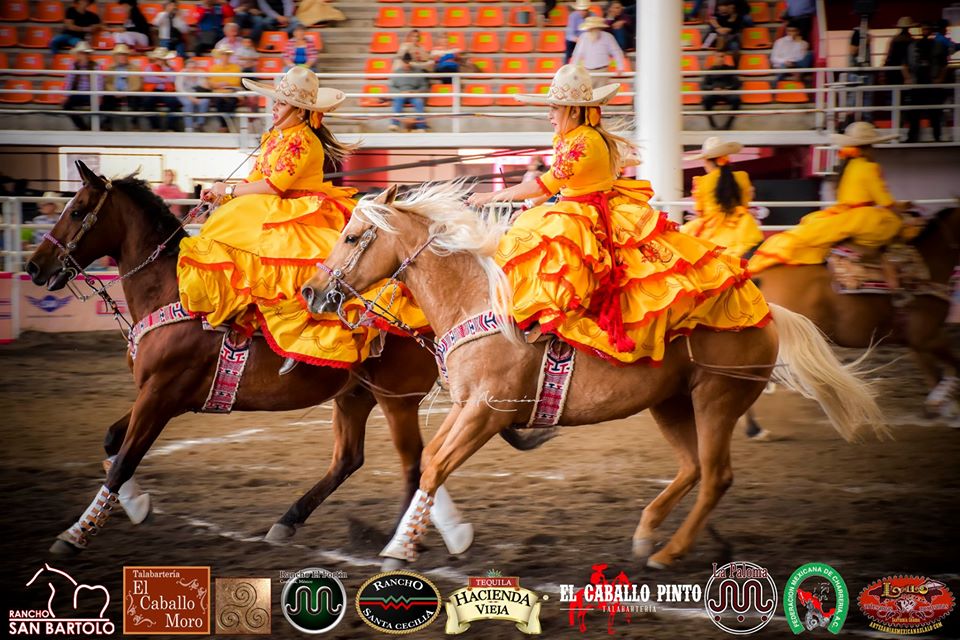
The Daring Escaramuzas are the only female equestrian team in a charreada and is formed by sixteen women horseback riders, but only eight ride at a time.They ride specially trained escaramuza horses and they have their own set of rules.
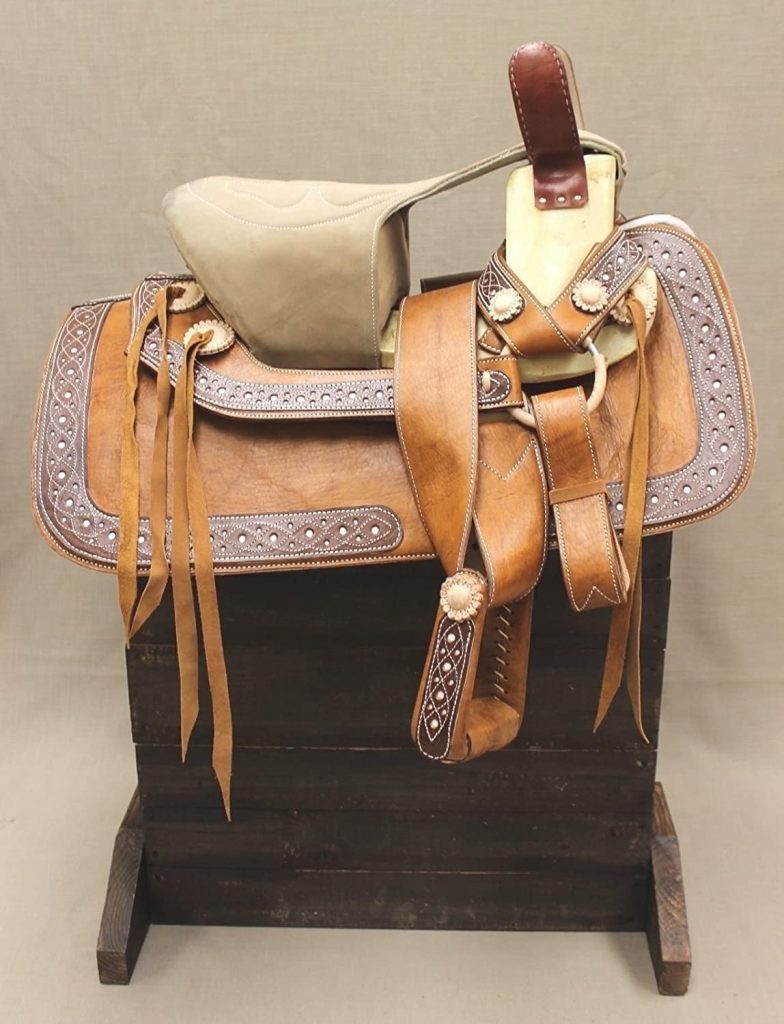
Their routines are practiced in a lienzo, or a circular arena where they perform 12 Exercises with Mexican music during a competition riding in choreographed patterns with a high degree of difficulty. They involve close and precise intersection of the horses at full speed – creating intense moments of suspense with certain movements.
ALBARDA – ESCARAMUZA SADDLE
They ride on a traditional side saddle called «Albarda», emphasizing their femininity. The two stirrups are on the same side, one higher than the other. (See photo) usually covered by their traditional Mexican dresses.The sport was inspired by the Mexican Adelitas who fought in the Mexican Revolution»
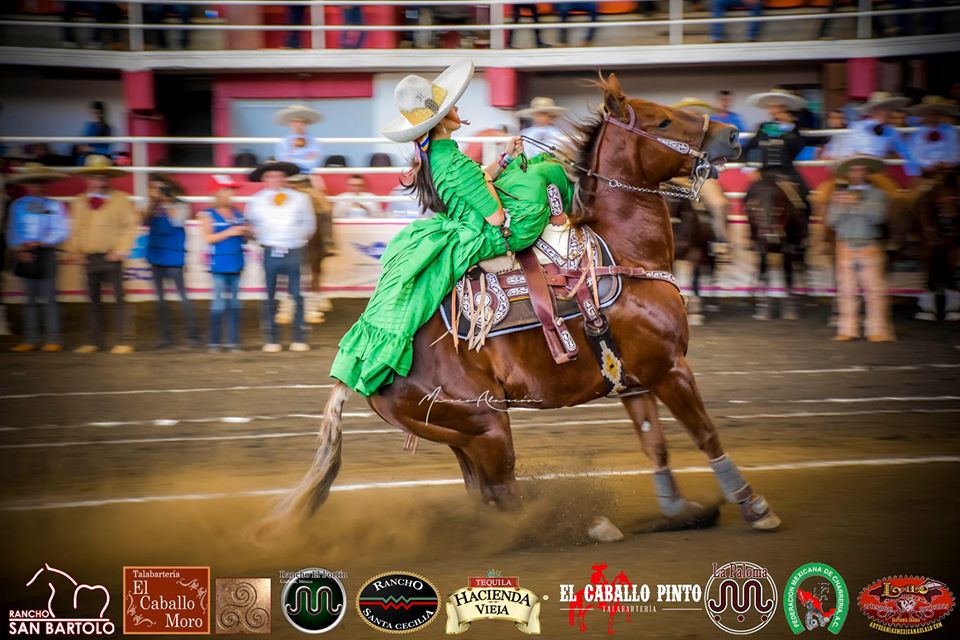
As family friend, the celebrated photographer and Guggenheim Award winner Jay Dusard writes:
«When the Escaramuzas zoom passes in front of my camera lens, it’s an elegant smear of color and movement. Eight magnificently dressed Adelitas riding at a gallop form a training team that executes complex maneuvers at dazzling speed. In my opinion, riding sideways, at any speed, would be a considerable challenge. However, these charming young ladies show perfectly superior equestrian skills.”
Jay Dusard photographer/author of The North American Cowboy: a Portrait, and HORSES with Thomas McGuane.
CHARROS AND CHARREADAS
But also, let’s not forget the demonstration of the Mexican charros’ mastery of equestrian skills during a charreada, which deserves a perfect score. As the famous American photographer and author Jade Dussard explains «The lienzo is the mastery of the charreada, a sample of the many skills of the men who ride and work with ropes».
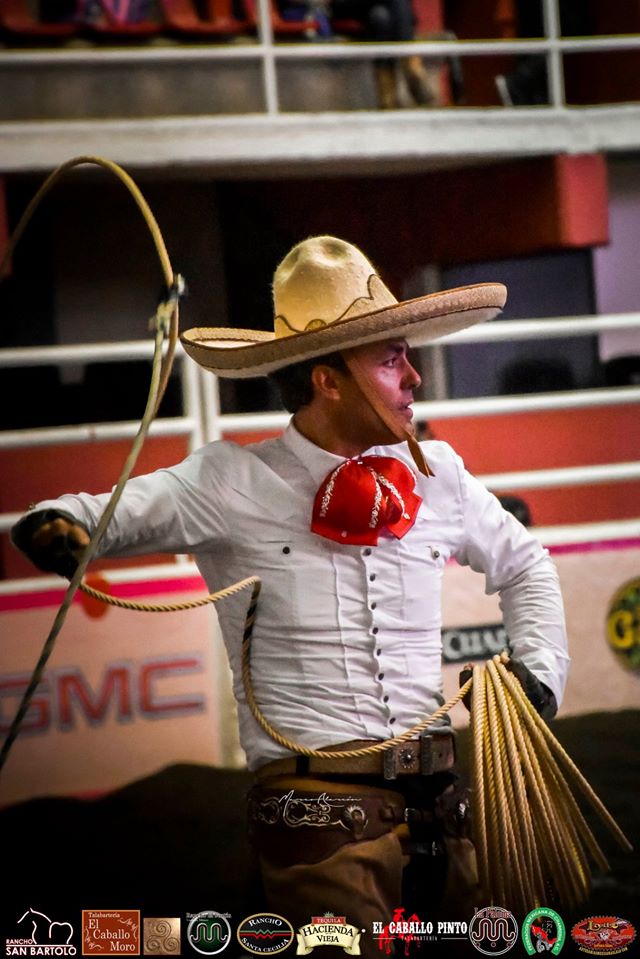
«The circular part of the lienzo, crowned by the grandstand, is the stage for elegant riding and roping, such as the spectacular Mangana a Pie, where a charro stands on the lienzo, and works with his roping to catch the front legs of a fast mare and brings her to the ground. The music for the events is provided by a south of the border brass band.»
GRAND INTERNATIONAL PARADE
I made it just on time to my favorite activity of the whole Festival was the International Charro Days Parade, and literally jumped like a «paso de la muerte» among horses on a charreada, from my Silverado truck to the caravan where I was graciously invited to participate with the float of Rancho Viejo Resort & Country Club.
This parade originally passed through both cities on the border; Matamoros and Brownsville. It was a continuation of the strong cultural bond between these two cities. “My mother used to watch the whole parade by her window on Avenida Álvaro Obregón, said Rafael Escudero, a native from Matamoros. Only recently, has the parade stopped going through Matamoros and is held in downtown Brownsville entirely.
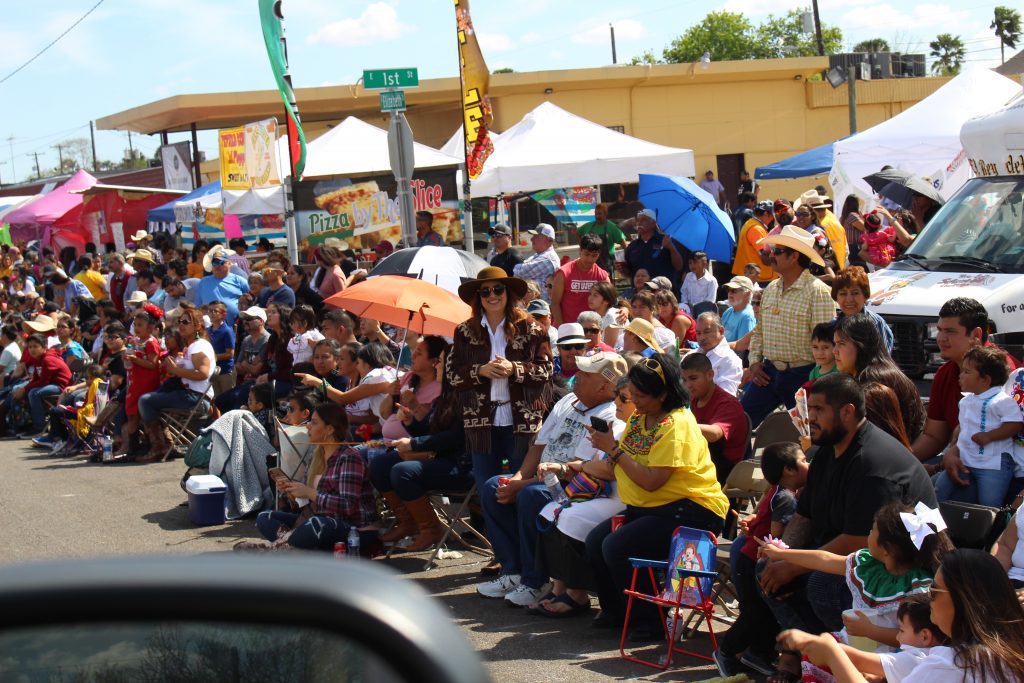
Public waiting for Parade 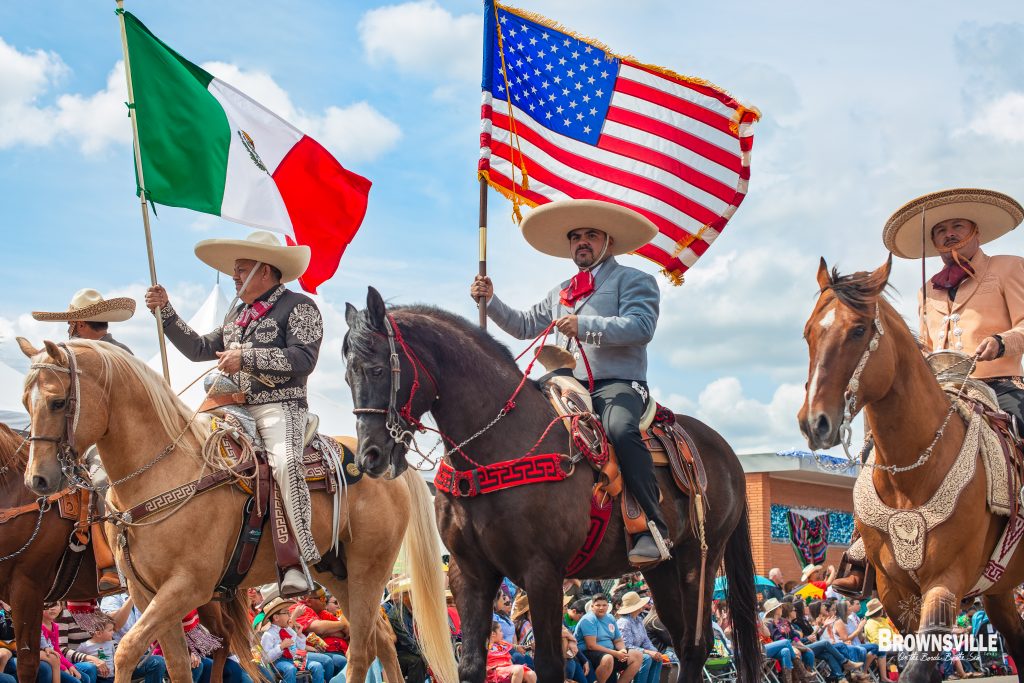
Charro Days Parade 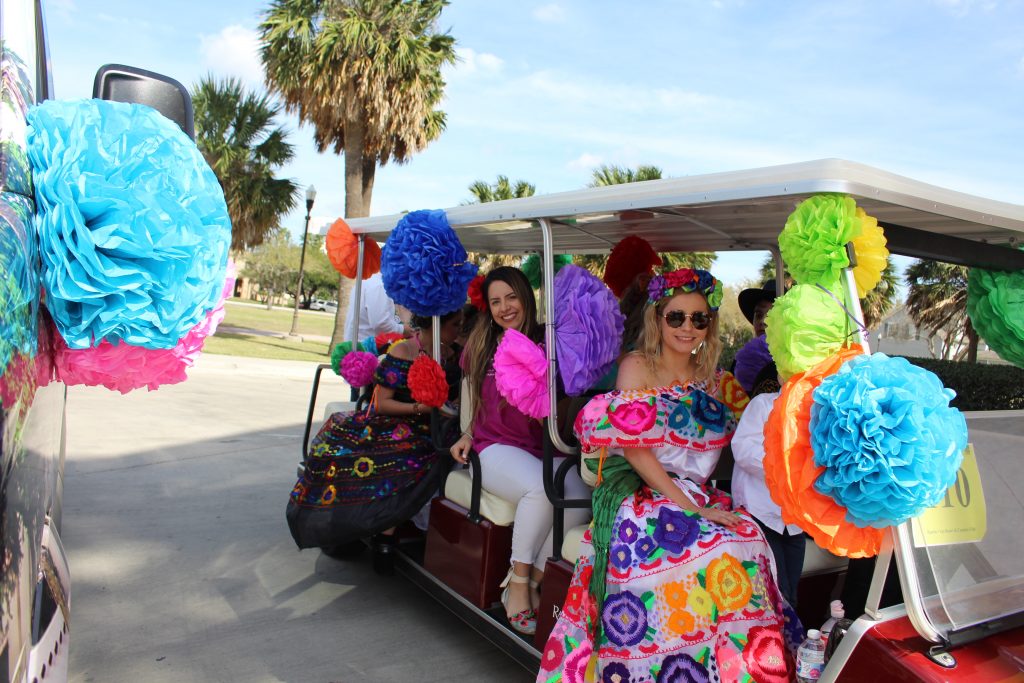
Rancho Viejo Caravan 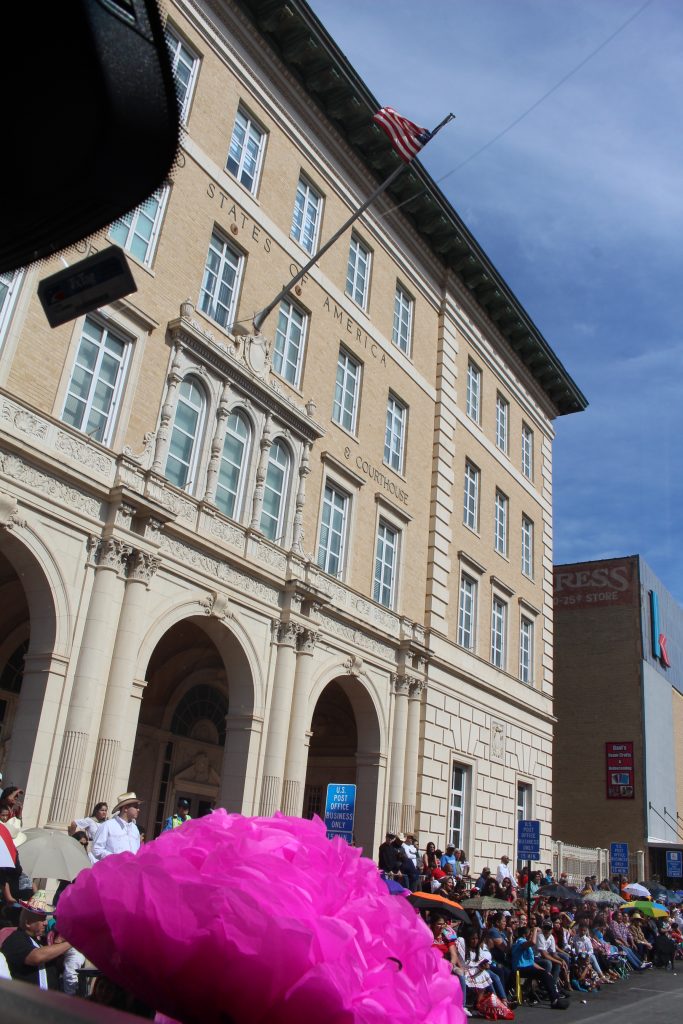
Old Federal Court Building 
Students waiting for their Caravan
“For years, it was called the only international parade in the country. I don’t think any of the American sponsored floats go to Matamoros any more. But when I was in high school, I was in the Saturday parade and the American sponsored floats went to Matamoros. We had bands from Matamoros schools who came to Brownsville, marched in the parade and then marched back over the bridge to Matamoros to play more music ” –
Reba Cardenas McNair, author of «Stories from the Rio Grande»
«We had to wear our Charro Sombreros on our backs so we could turn our batons over our heads as we marched in the parade!» said Diane (Galvan) Little, former Stell Middle School student native of Brownsville who now lives in Austin, Texas. “We have good memories of the parade and a lot of fun.»
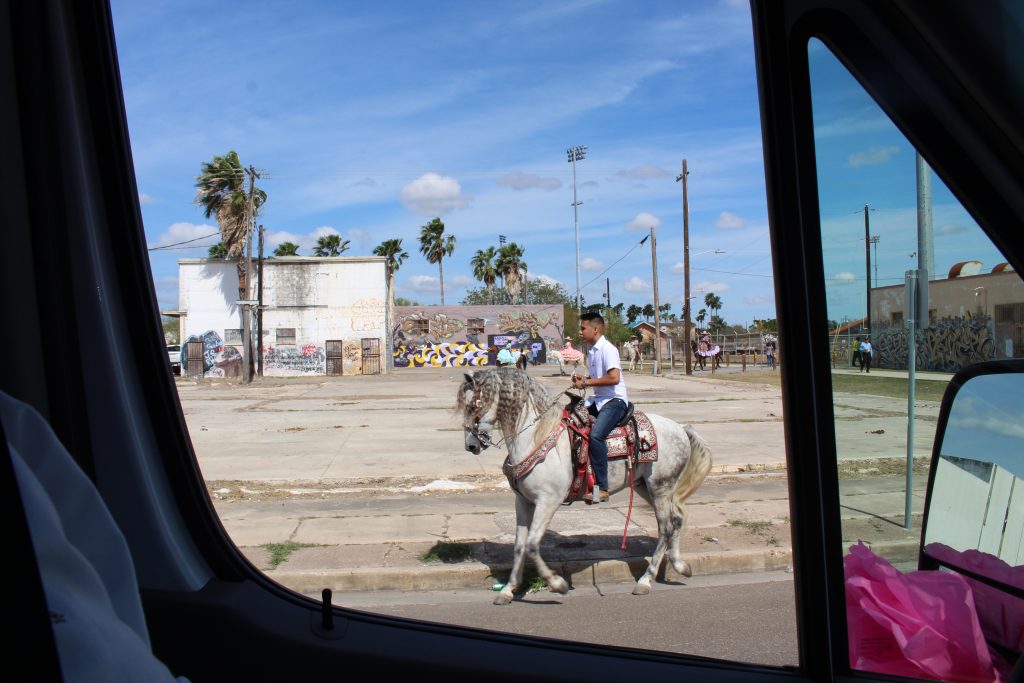
I was impressed to see Charros and Escaramuzas riding the most beautiful and fine horses I have ever seen in one place, such as the Paso Fino horses. A breed of natural looking lightweight horses that can be traced back to the horses imported into the Caribbean from Spain, which are distinguished by their smooth, natural, four-stroke and side gait.Seeing all of them in the parade lined up properly was mesmerizing, really moving. You have to see it.
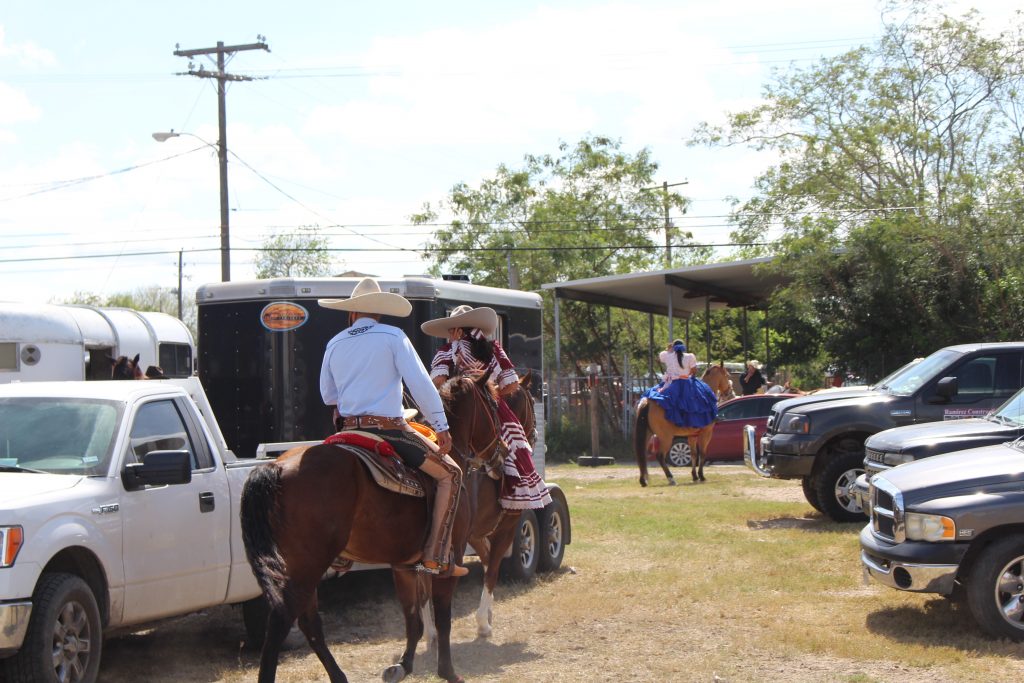
As I was leaving the Parade, I saw Charros and Escaramuzas taking their horses to their horse trailers and double-cabin vans, and I felt that it fit perfectly with my vehicle. José Rodríguez, one of the Charros member of Lienzo Charro Los Tamaulipecos, told me about my truck «I have had a Silverado for 5 years or more and I am saving up to buy one next year.”
FEELING OF OPTIMISM
Seeing almost 50,000 people gathered in their seats, set up around the city the night before, and looking around to see the parade, all I could see were the happy, excited faces of both the spectators and the participants.
I also felt a sense of joy and optimism shared by the border towns of Brownsville and Matamoros, that even the uncertain times on the U.S.-Mexico border today could not be diminished. Without a doubt, this strong feeling of goodwill and joy prevails.
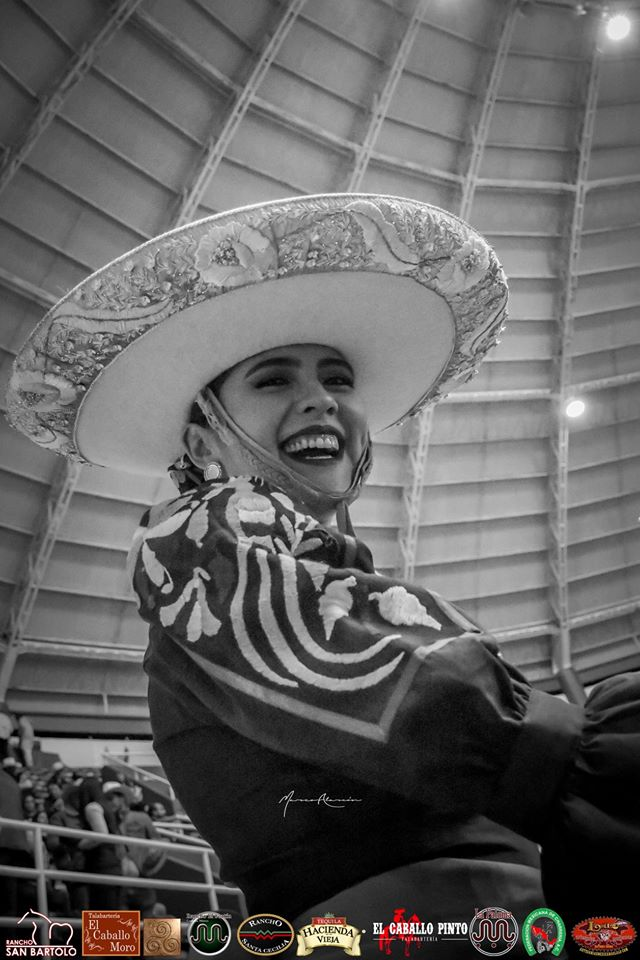
==========
Every time I closed the Silverado truck during this trip I had been hearing a soft triple beat sound, and when I listened more carefully, it sounded like the mariachi trumpets – «ta-ta-ta-ta» when I clicked on the keys. The Silverado was the perfect vehicle to come to Charro Days, – and to return next year!
ACKNOWLEDGEMENTS
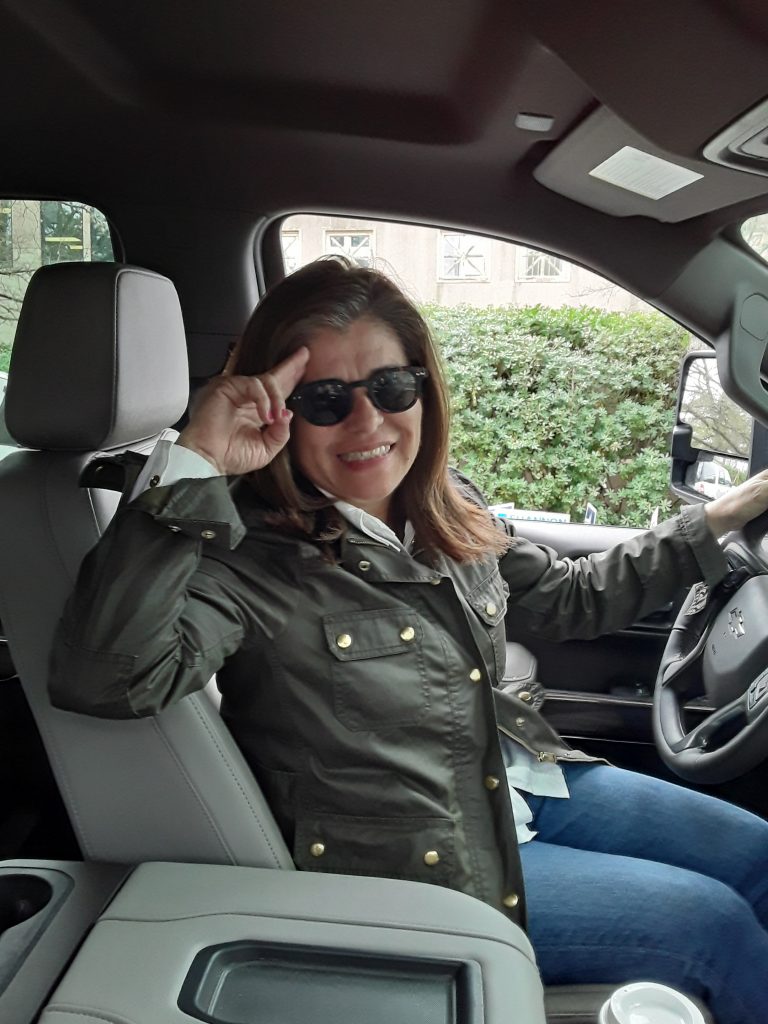
Special thanks to General Motors for their support for providing La Revista Mujer with a 2020 Silverado Crew RST 4WD, and making this trip and publication possible.
Special thanks to Reba Cardenas McNair, a Brownsville entrepreneur and civic leader, author of the book «Stories of the Rio Grande» and recent recipient of the Brownsville Historical Association Preservation Award, for her support on Charro Days and the History of Brownsville.
Thanks to Diane (Galvan) Little, a Brownsville native and Austin resident, for sharing her childhood memories of the Charro Days parade as well as Connie Garcia Knox and Rafael Escudero and José Rodríguez
for sharing their family’s memories.
Thanks to Nydia O. Tapia-Gonzalez of RGVMOD for information on Brownsville and Matamoros Mid Century architecture and Cristina Tijerina regarding the Brownsville Museum of Costumes of the Americas, as well as Isabel Garcia Vezzetti regarding the Pan American Round Table.
Special thanks to Rancho Viejo Resort & Country Club and Jorge Lopez and Jenika Gonzales for their kind hospitality and invitation to be part of the International Parade. I also thank the Charro Days Organization and the Brownsville Chamber of Commerce for their collaboration.
Special thanks to Mexican photographer Marco Alarcón, who specializes in Mexican charreadas and culture for his images of Escaramuzas and Charros in Lienzos in Mexico.
Equally special thanks to Jay Dusard photographer/author of The North American Cowboy: a Portrait, and HORSES with Thomas McGuane, for his comments on Escaramuzas and Charros.
Finally, a million thanks to all the people of Brownsville and Matamoros for keeping this tradition alive and this incredible festival for the past 83 years.
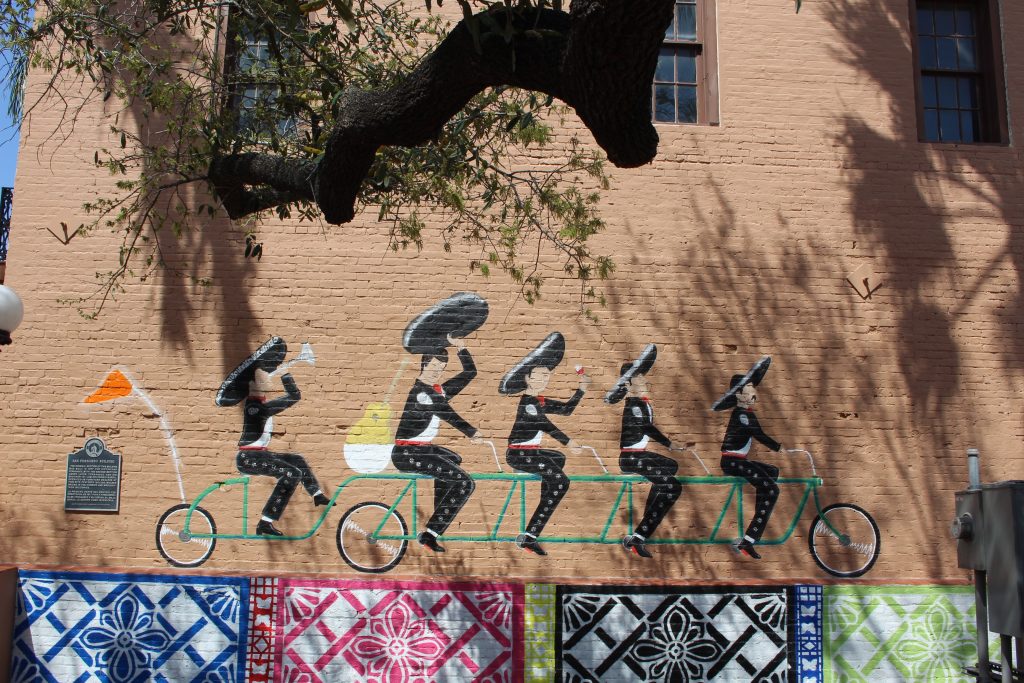
FIN

